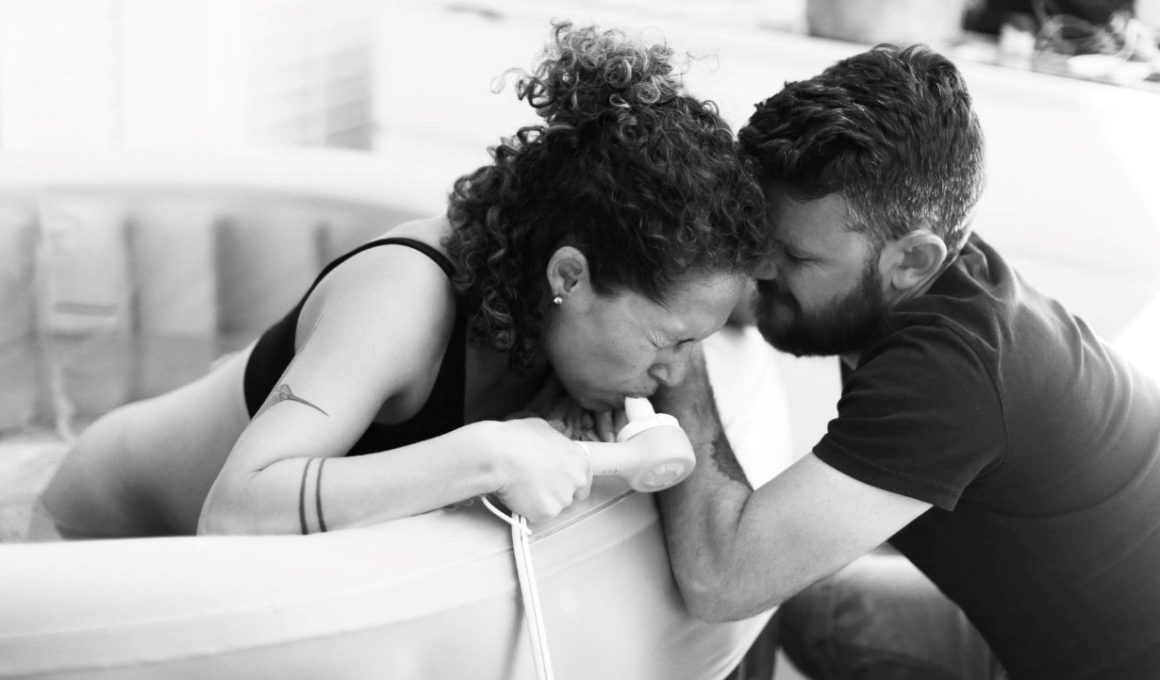In most movies, you see labor begin with a woman’s water breaking – a gush of water on the surface beneath them. Truth is, only about 20% of people in labor will experience their water breaking before going through strong contractions. For most persons, labor begins with contractions that may be regular or irregular in intensity and duration. Going into labor soon? Keep reading below to learn about the phases of labor and what you can expect!
Early Labor
During early labor, contractions may be as far apart as 20 minutes whilst lasting 30-60 seconds. They then become progressively stronger and closer together (generally not in a consistent pattern.) The cervix generally starts to thin (efface) and open (dilate) to about 1-5 centimeters.
What You May Experience:
- Mild contractions (most persons compare this to menstrual cramps)
- Tightening in the abdomen or back
- Diarrhea
- Release of the mucous plug and bloody show as the cervix begins to open
- Bag of waters may break (let your provider know if you think your waters has broken)
- Happiness/Excitement
- Relief that labor has begun
What You Can Do:
- Try a pelvic tilt position for backache
- REST and RELAX as much as possible
- Walk
- Change positions frequently, preferably upright positions
- Cook/Bake (distract yourself)
- Begin slow breathing exercises if needed
- Eat and drink lightly (Its true, labor is like running a marathon, you NEED your ENERGY)
Active Labor
What You May Experience:
- Stronger contractions, 5 minutes apart or less, that lasts about 60 seconds
- 6-8 centimeters dilated
- Contractions are more regularly patterned
- Pressure on the bladder with a need to urinate more
- Growing seriousness and less talkative
- Tension and irritability if disturbed
- Increased backache
- Bag of waters may break
- Sweating
- Desire for companionship
- Apprehension/ Uncertainty if you can do it
What You Can Do:
- Go to hospital/birth center (if not already there)
- Walk around if comfortable
- Slow/Patterned breathing
- Comfort Positions (assisted squat, rock or sway on a birth ball, etc.)
- Warm bath or shower
- While breathing, visualize your “happy place” or holding the baby in your arms
Transition
What You May Experience:
- Contractions are 1-3 minutes apart and last 60-90 seconds
- 8-9 centimeters dilated
- Contractions very intense and may come on top of another (double peak)
- Bag of waters may break if it hadn’t broken earlier
- Resting between contractions
- Very irritable
- Sweating and shaking
- Nausea and vomiting
- Severe lower backache
- Slight urge to push
- Rectal pressure
What You Can Do:
- Keep in mind this is the shortest phase of labor
- Change birthing positions and find your most comfortable position
- Breathe through each contraction
- Practice mindfulness and visualize holding your baby
- Rest between contractions
- Use patterned breathing
Pushing and Birth
What You May Experience:
- Possible lull to regain energy and rest to prepare for pushing
- Uncontrollable urge to push with contractions
- 10 centimeters dilated
- “Second wind”-strength to push
- Stretching sensation as baby’s head begins to crown
- Relief and Excitement as baby is born
What a Person Can Do:
- Find best pushing position (all fours, semi-sitting, squatting, side-lying)
- Use spontaneous (or directed) pushing
- Relax shoulders, legs, jaw, perineum
- OPEN YOUR EYES FOR THE BIRTH OF YOUR BEAUTIFUL BABY!!!
Delivery of Placenta and Immediate Postpartum
After the birth of the baby, the placenta separates from the uterus and is pushed out of the birth canal in 5 to 20 minutes while the person who gave birth is bonding with their baby.
What You May Experience:
- Mild or less intense contractions continue
- Alert (no longer in labor zone)
- Joy
- Tiredness
- Relief that baby is here
- The uterus begins to contract to normal size
What You Can Do:
- Lightly push as you feel the urge or as instructed by the medical attendant.
- Place the baby on your chest and enjoy skin-to-skin bonding
Recommended: Pooping During Labor: What You Should Know
It is imperative to understand that these birth stages flow sequent and there is no set beginning and ending within a specific timeframe. Every person’s body is different, and you may not experience every sign of each phase. You should always listen to your body, and most certainly consult with your health provider.
For support and more information on labor and delivery, visit Vela Haven.
- Shocking Truths About Postpartum Sex - October 11, 2021
- Tips for Getting Your Infant/Toddler to Nap During the Summer - July 27, 2021
- Going Into Labor Soon? Birth Phases You Can Expect - September 28, 2020








